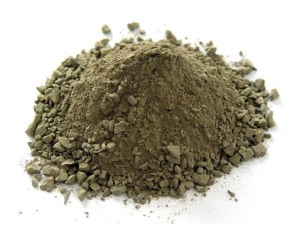- 09
- Oct
Comparison of ramming material and casting material
Comparison of ramming material and casting material
Ramming material and castable are both refractory materials, but there are also differences between the two:
1. The difference of the raw material composition: The ramming material is mainly an unshaped refractory material made of a certain particle gradation aggregate and powder plus a binder and additives, which is mainly constructed by manual or mechanical ramming. Ramming materials include corundum ramming materials, high-aluminum ramming materials, silicon carbide ramming materials, carbon ramming materials, silicon ramming materials, magnesia ramming materials, etc. Like the electric furnace bottom ramming material, silicon carbide, graphite, electric calcined anthracite as raw materials, mixed with a variety of ultra-fine powder additives, fused cement or composite resin as a binder made of bulk materials. It is used to fill the gap between the furnace cooling equipment and the masonry or the filler for the masonry leveling layer.
castable is a kind of granular and powdery material made by adding a certain amount of binder to refractory materials. With high fluidity, it is suitable for unshaped refractory materials formed by casting. The three major components of the castable are the main component, the additional component and the impurity, which are divided into: aggregate, powder and binder. Aggregate raw materials include silica, diabase, andesite and waxstone.
2. The difference in the scope of construction: The ramming material manufacturer advocates that the ramming material must be applied evenly and smoothly during the ramming construction. Ramming materials are generally used for parts of the kiln where refractory bricks cannot be built or where masonry is difficult. The construction of the ramming materials is relatively simple. It is used to fill the furnace cooling equipment and the masonry voids or the filling material for the masonry leveling layer.
Castables are mainly used to construct various heating furnace linings and other integral structures. Some fine types can also be used in smelting furnaces. For example, aluminate cement refractory castables can be widely used in various heating furnaces and other thermal equipment without slag, acid and alkali corrosion. In the parts that are corroded by molten iron, molten steel and molten slag and have high working temperature, such as tapping troughs, ladles, blast furnace shafts, tapping channels, etc., a combination of low calcium and pure high-alumina cement can be used. A refractory castable made of high-quality granular and powdery materials with high alumina content and excellent sintering.
For example, phosphate refractory castables can be widely used in heating furnaces and soaking furnaces for heating metals, and can also be used in coke ovens and cement kilns where they are directly in contact with materials. In some parts of metallurgical furnaces and other vessels that are in direct contact with slag and molten metal, the use of high-quality phosphate refractory castables for repairs also has an outstanding effect. In summary, the castable can be used for the casting of key parts of the furnace body, such as the furnace door frame and the vicinity of the feeding port; the molten metal pouring runner is generally cast with castables. After a period of use, the castables will fall. Place regularly patched.

